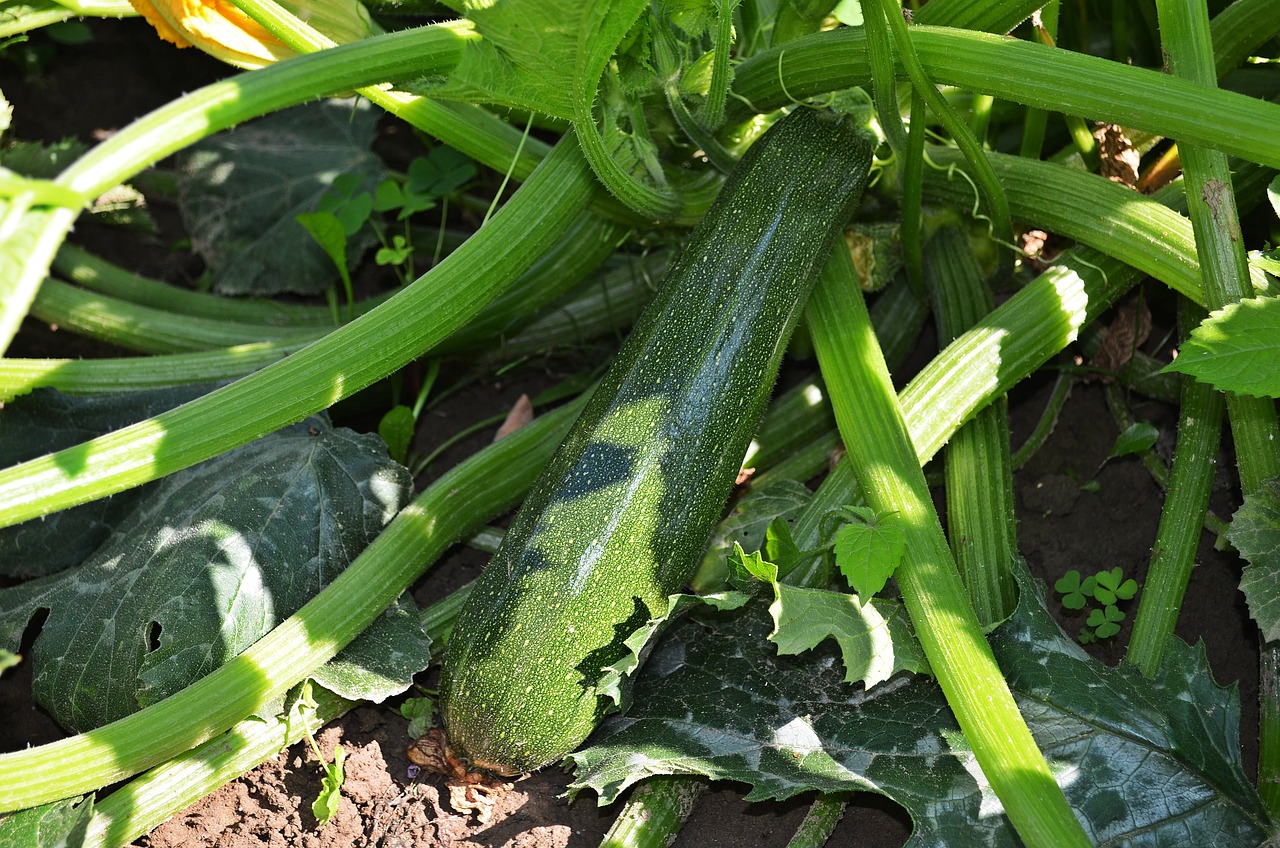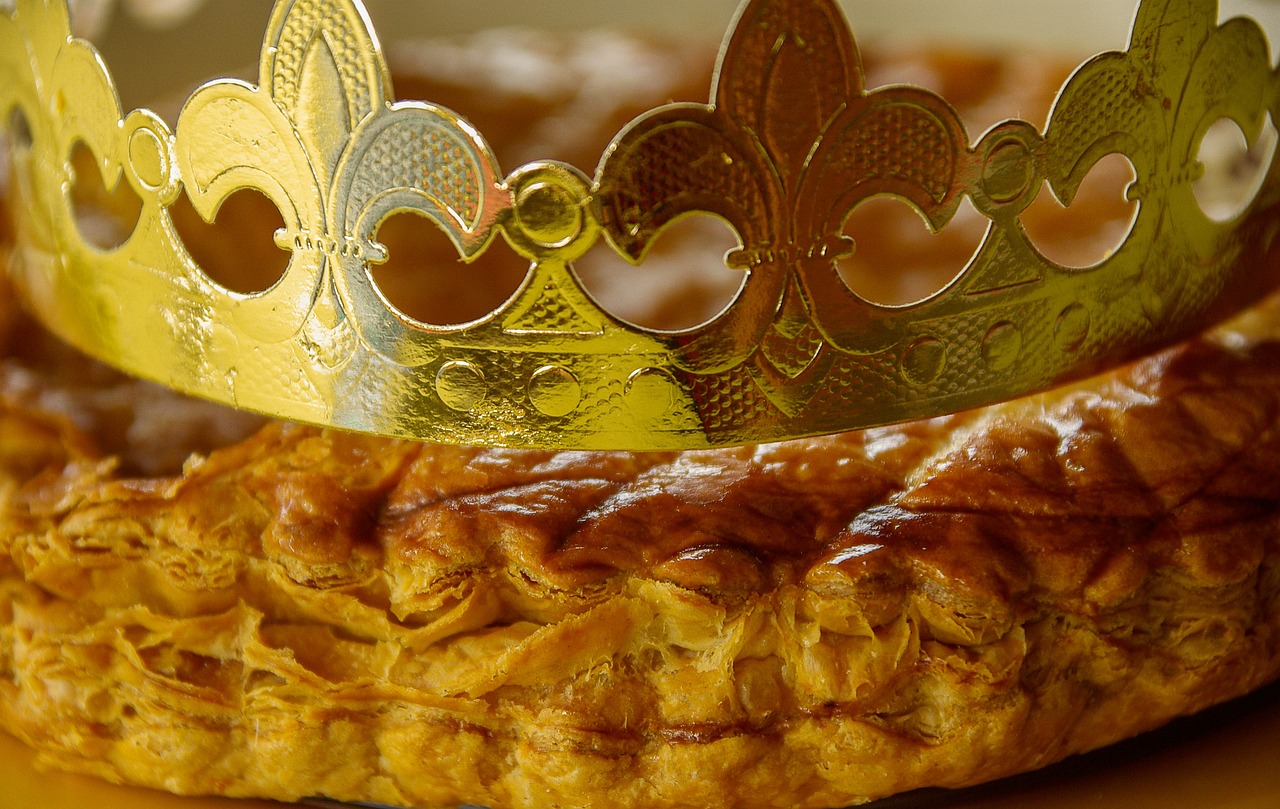Who invented the dishwasher – The woman inventor
Washing dishes can be a frustrating task, as it requires concentration and mechanical effort from both hands to get dishes and other kitchen utensils perfectly clean. It is also time-consuming and sometimes dishes are spoiled in the process.
The advantages of a dishwasher are undeniable. It takes away the monotonous job of washing dishes and other kitchen utensils with our hands. Who invented the dishwasher? This machine has made washing dishes more fun.
It saves time, money and water, and is the most hygienic way to wash dishes. Plus, you’re sure to only break a few dishes in the dishwasher.
We will be forever grateful to the inventor who thought of building the machine that washes so well and makes washing dishes a simple task after all. Let’s look at the history of dishwashers.
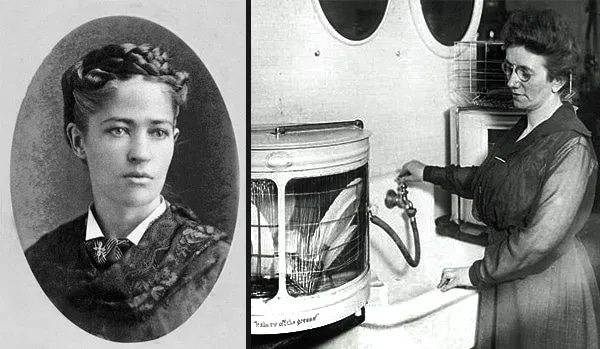
Who invented the dishwasher?
First attempt at invention
Due to the need to produce the machine that can wash dishes and the ever-changing ideas that inventors had during this time, Joel Houghton produced a machine made of wood that washes dishes in the year 1850.
This machine was the first attempt to manufacture a dishwasher, but it was not the best of inventions. He used a wheel that was turned manually by hand to spray dirty dishes with water.
Joel Houghton was awarded a patent for this work, but there was still more work to be done to achieve a perfect design.
Second invention attempt
Using Houghton’s model, L.A. Alexander developed a dishwasher in 1860 that rotated the dishes through a tub of water by means of a gear mechanism.
Like the Houghton model, this model had its shortcomings and was therefore not useful.
Who invented a dishwasher that works?
The inventor of the first functional automatic dishwasher was Josephine Garis Cochran (she preferred her name to be spelled “Cochrane”) in 1886.
He did not like the traditional method of washing dishes with his hands, as it took its toll on him. It is said that he had a lot of crockery and that many people came to his house for parties.
She later realized that regular washing of her dishes by her maids damaged them in the process, so she was determined to make a machine that could wash dishes.
Cochrane invented the first functional dishwasher which is the mother of today’s dishwasher. He made it in the shed behind his house and called it Cochrane’ Dishwasher.
He obtained a patent for his work on December 28, 1886. Note: You can choose to dry the washed dishes with the hot air from the heating element or leave them to dry to save energy.
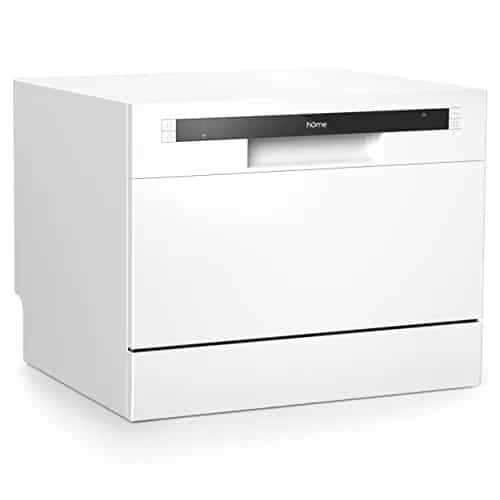
Learn more about the inventor of the dishwasher in this video.
Biography
Josephine Garis Cochrane was born March 8, 1839 to father John Garis and mother Irene Fitch Garis in Ashtabula County, Ohio. Her grandfather was John Fitch the inventor of the steamboat. She later moved to Shelbyville Illinois to live with her elder sister, Irene Garis Ransom.
She married William Cochran, a wealthy businessman, on October 13, 1858 and lived in Shelbyville, Illinois. Together, William and Josephine had two children, Hallie Cochran (who died at age 2) and Katharine Cochran.
She shared her ideas of building a dishwasher with her friend George Butters (a mechanic) who was her friend and together they produced their first dishwasher in the shed behind her house in 1886 and later became one of her first employees.
He formed the Garis-Cochrane dishwasher manufacturing company and received a patent for his work on December 18, 1886.
Josephine Garis Cochrane died on August 13, 1913. She was buried in Shelbyville, Illinois.
In 2006, Cochrane was inducted into the National Inventors Hall of Fame.
How did the first dishwasher work?
The first dishwasher invented by Josephine Garis Cochran worked with the help of a mechanical crank outside the dishwasher. The crockery was held in place by a wire compartment. The dimension of the wire compartment was determined by measuring the common crockery in the kitchen.
The dishes were washed by the action of pressurized hot water from the spray arm of the dishwasher. The need for manual washing is excluded. The water is boiled in the copper kettle of the dishwasher.
The dishwasher handle helps to clean the dishes by dispersing the hot soapy water all over the dishes. The machine could be operated mechanically or manually. Another mechanism of the dishwasher sprayed hot water to rinse the dishes.
His dishwasher was an improved version of the first invention.
First, he measured the dishes and all the cooking utensils and built wire compartments for each item to keep them safe during spinning. The compartments were placed on a wheel that was placed inside a copper boiler.
In 1893, during the World’s Columbian Exposition held in Chicago, he presented his model and had visitors amazed at the functionality of this machine that relied solely on water pressure.
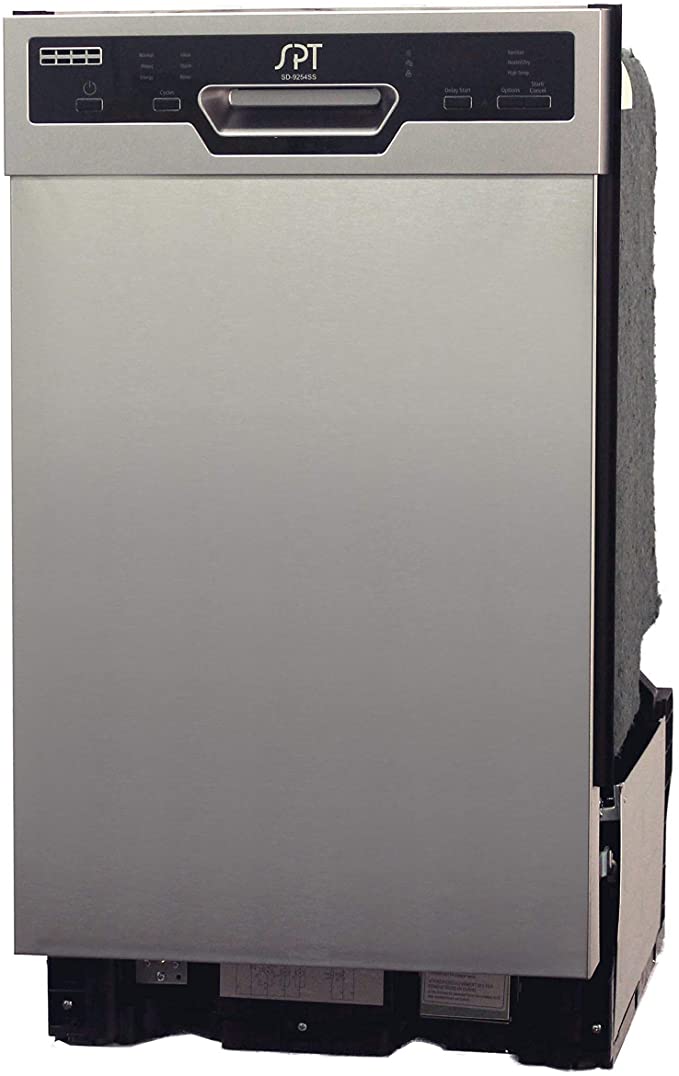
General acceptance
At the time Cochrane unveiled its dishwasher, there was little public awareness so it was not widely accepted. Only hotels, restaurant owners and wealthy friends who saw the need to acquire this valuable machine patronized it to their misfortune.
His company, the Garis-Cochrane dishwasher manufacturing company, was incorporated into Hobart Manufacturing under the “KitchenAid” brand name.
In 1949, KitchenAid manufactured a dishwasher using Cochrane’s model for the design.
Until the 1950s, dishwashers became a household household household name and plumbing was responsible for supplying hot water to homes and became a globally accepted kitchen appliance to this day.
Today, KitchenAid is part of Whirlpool Corporation and Cochrane is considered its founder.
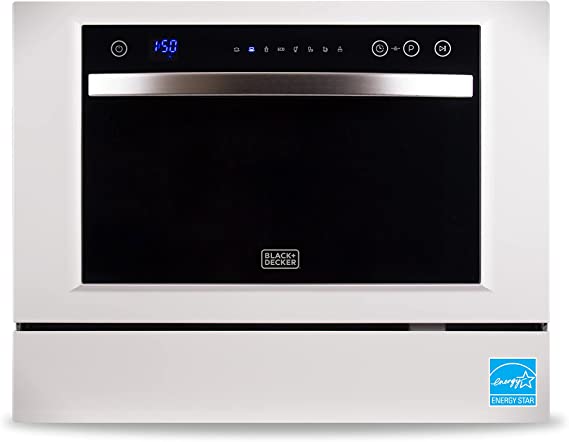
Modern dishwashers
Modern dishwashers are not so different from the original model produced by Cochrane.
Its operation is as follows:
i. Cold water is pumped from the domestic supply to the dishwasher.
ii. The heating element located at the bottom of the machine heats the water to a very high temperature of about 86-140 degrees Fahrenheit.
Note: Some dishwashers use hot water from the domestic mains, so they do not need the heating element. The detergent dispenser opens automatically.
iii. An electric pump located at the bottom of the machine pumps the water upwards.
iv. Sprinkler arms spray hot water mixed with dish soap around dirty dishes in the machine.
v. After the first cycle, the water returns to the bottom of the machine and is drained through the built-in drain and another wash cycle begins.
vi. In the same mechanism, hot water is pumped around the machine and the dishes are rinsed with clean water.
vii. The water is drained again.
History of dishwashers
It is not uncommon for people to think that washing dishes by hand is much more hygienic and water efficient than cleaning them with a dishwasher. However, this myth has been proven false with the help of the advanced features offered by today’s dishwashers. Although some version of the mechanical dishwasher has been around for nearly 160 years, studies have shown that the average woman spends 66 minutes and the average man spends about 42 minutes each day washing dishes by hand. The evolution of the dishwasher has come a long way to rescue people from the most tedious work in the kitchen.
With a dishwasher at home, you shouldn’t have to worry about having to clean or replace dish sponges, which are full of bacteria and can pose a health risk. You shouldn’t worry about using so many dishes while cooking for fear of a monumental cleanup job. You shouldn’t have to worry about washing dishes at all. Today’s dishwashers make the usual after-meal cleaning job virtually effortless.

Dishwasher innovation
A man named Joel Houghton came up with the idea of creating the first dishwasher with its hand-turned wooden wheel in 1850 and patented it shortly thereafter. This so-called dishwasher was hardly effective, as it only sprayed water on the dishes. A more successful attempt was that of a woman named Josephine Cochrane, who came from considerable wealth. Although she didn’t wash dishes herself, she was determined to create a dishwasher that would reduce the chances of her servants breaking expensive china. Thus, he invented the first automatic dishwasher consisting of a wooden wheel supported by a copper boiler. His innovation of the manually operated mechanical dishwasher would be instrumental in the creation of the KitchenAid company.
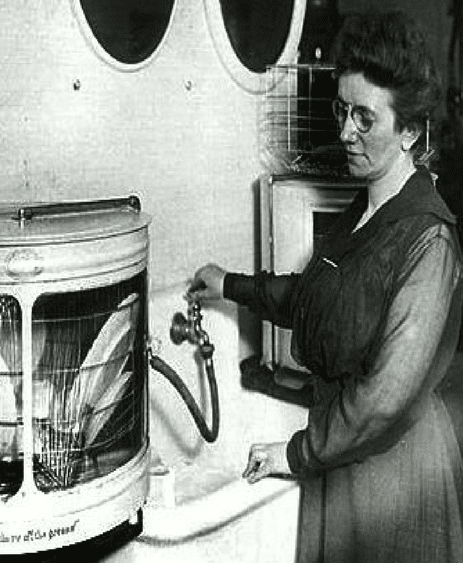
1920
In the 1920s, the dishwasher garnered enormous publicity. Dishwashers became more modern and easily accessible to middle-class people. Especially with the generalization of indoor plumbing, dishwashers caused a sensation in middle-class households. As the demand for dishwashers was increasing, there was a boom in manufacturers wanting in on the action. Miele was founded in 1900, Bosch in 1906, Maytag in 1907, Whirlpool in 1911 and Fisher Paykel in 1934. All of them became household names thanks to the popularity of the dishwasher. Since then, each of these brands has made their unique contributions that made dishwashers what we find in our homes today.
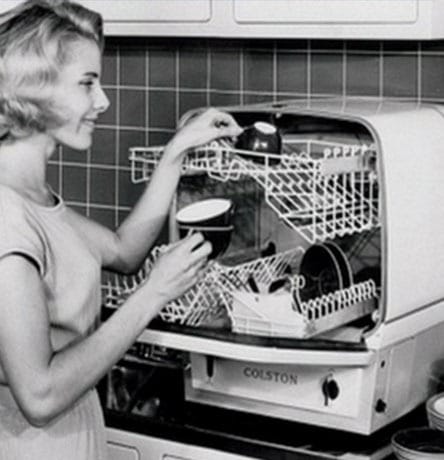
It is very easy to see how today’s high-tech dishwashers differ from the hand-operated oddities that were first conceived. The brands that contributed to the advancement of dishwashers occupy very specific places in today’s market. For example, Fisher and Paykel created the DishDrawer and completely revolutionized dishwasher design. Bosch provided features such as stainless steel bowls and self-cleaning filtration to ensure the durability of the new dishwashers.
Kenmore introduced customers to adjustable top baskets and Turbozone, a jetting bench at the rear of the dishwasher designed especially for post-scrubbing. Maytag features tiered baskets and numerous additional side baskets. These have come together as standard features we have come to expect in dishwashers.
Thus, today’s dishwashers usually come with either plastic or stainless steel depending on what you prefer. Stainless steel bowls have the advantage of resisting hard water and provide better sound dampening. They also conduct heat better and dry dishes faster.
Most dishwashers come with food disposal units to dispense food scraps directly into the garbage. These units often help dishwashers to reduce the noise level. Most modern dishwashers include features such as sensors, microprocessors, multiple wash cycles, temperature control and rotary switch.








